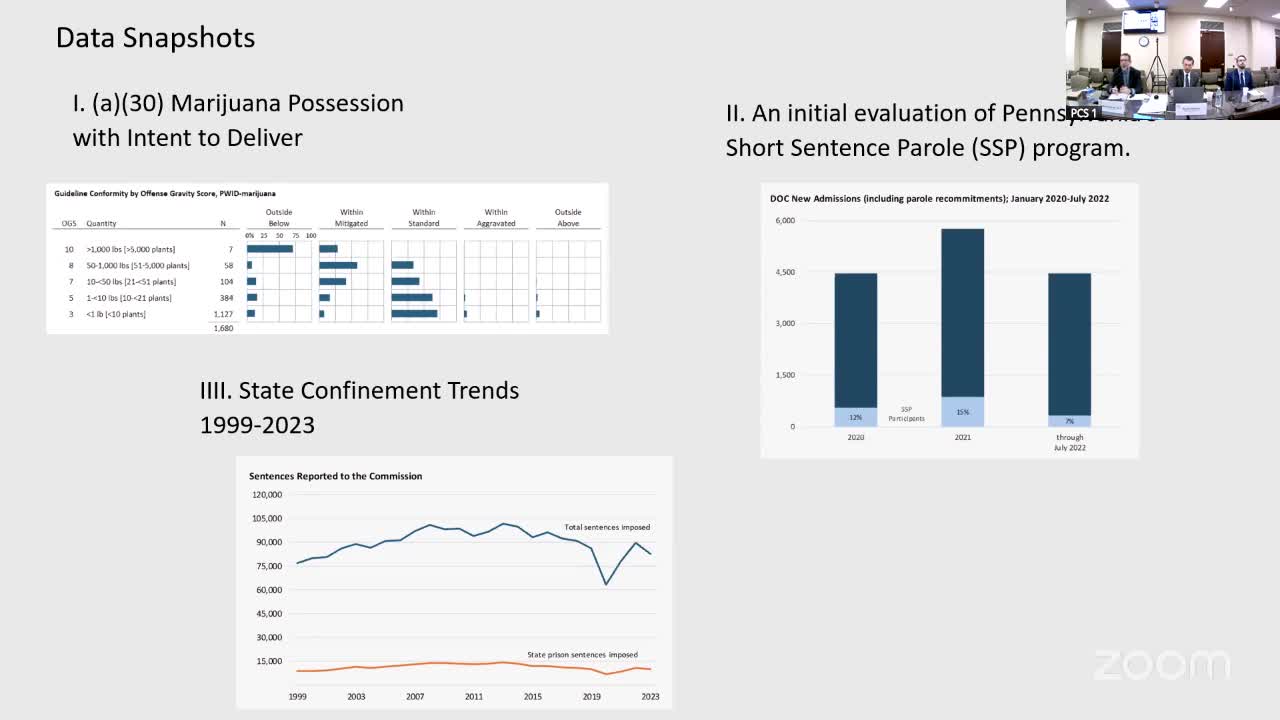
This article was created by AI using a video recording of the meeting. It summarizes the key points discussed, but for full details and context, please refer to the video of the full meeting. Link to Full Meeting
The data presented revealed a stark reality: between 2014 and early 2018, fentanyl was implicated in over half of all drug overdose deaths in Pennsylvania. In response to this public health emergency, the commission had previously adjusted sentencing guidelines, increasing the Offense Gravity Score (OGS) for fentanyl possession and possession with intent to deliver. For instance, the OGS for less than one gram of fentanyl was raised from 6 to 9, resulting in a recommended sentence of 12 to 24 months, a significant increase aimed at addressing the severity of fentanyl offenses.
As discussions progressed, it became clear that the new categorization had a tangible impact on sentencing practices. The number of sentences for fentanyl offenses rose sharply following the implementation of these guidelines, while sentences for heroin offenses saw a decline. This shift highlights a growing recognition of the dangers posed by fentanyl, as well as a commitment to more stringent penalties for those involved in its distribution.
The commission also examined the outcomes of these sentencing changes. Data indicated that as the weight of fentanyl involved in an offense increased, so did the likelihood of receiving a state prison sentence. However, it was noted that only about half of those convicted received state confinement, with a quarter sentenced to county confinement and another quarter placed on probation. This distribution raises questions about the effectiveness of the guidelines and the judicial system's approach to handling fentanyl-related cases.
Moreover, the meeting revealed that conformity to sentencing guidelines varied significantly across different drug types. While 57% of fentanyl sentences fell within the established guidelines, this figure was lower compared to cocaine and heroin, which had conformity rates of 72% and 73%, respectively. This discrepancy suggests that fentanyl cases may be treated with greater variability, reflecting the complexities surrounding this drug and its impact on communities.
As the meeting concluded, the commission members expressed a commitment to continue monitoring the effects of these sentencing practices. The discussions underscored the urgent need for ongoing evaluation and adaptation of policies to effectively combat the fentanyl crisis in Pennsylvania, ensuring that the judicial system responds appropriately to the evolving landscape of drug offenses. The implications of these decisions will resonate throughout the state, shaping the future of drug policy and public health initiatives in the years to come.
Converted from PA Commission on Sentencing - June 12, 2025 meeting on June 12, 2025
Link to Full Meeting
Comments
View full meeting
This article is based on a recent meeting—watch the full video and explore the complete transcript for deeper insights into the discussion.
View full meeting